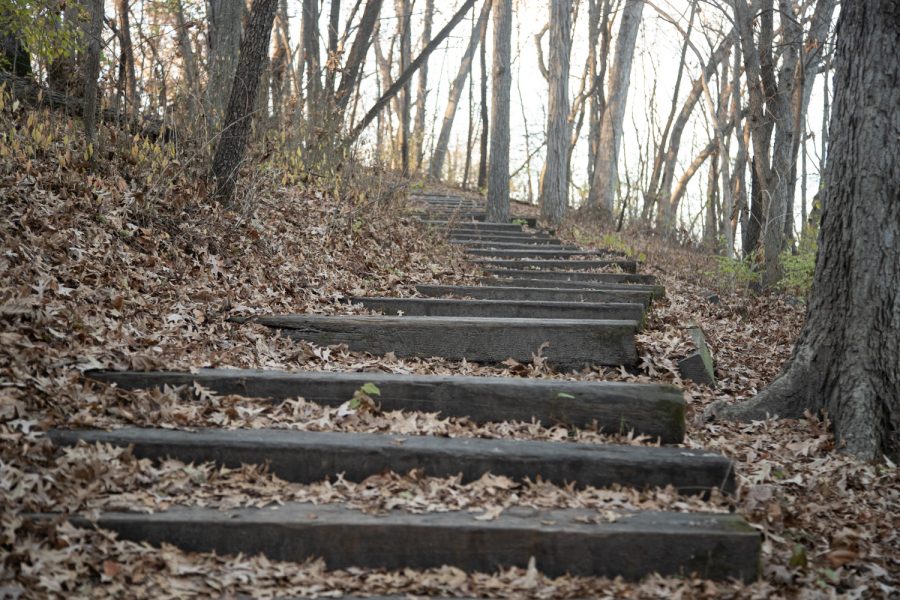Federal grant to fund native seed planting in Ryerson Wood State Preserve
The Iowa City Park and Recreation Department received a $200,000 grant to put toward native seed planting at Ryerson Wood State Preserve.
Ryerson’s Woods State Forrest Preserve provides trails open to the public from dawn to dark. The Ryerson’s Woods State Forrect Preserve hiking trail is seen on Friday, Dec. 3, 2021. The preserve is managed by the Iowa City Parks and Recreation Department.
December 8, 2021
The Ryerson Wood State Preserve, located near Iowa City, will plant native seeds and trees to remove invasive plant species after receiving $200,000 through the Iowa Department of Natural Resources.
Iowa City Parks and Forestry Superintendent Tyler Baird said the application for the preserve was one of the highest-scoring applications this year for larger cities.
“REAP is all dependent on funding and support from the state legislature, it’s a very good potential funding source for us each year when we’re looking at projects,” Baird said.
Baird said one of the main components of the project is to remove any non-native or invasive species types, like the honeysuckle plant.
He said that before planting, Iowa City Parks and Forestry make sure the site is clear of other plants that would outcompete the desirable native prairie or woodland species.
Next, the native species will be planted with specialized equipment that can broadcast and drill seeds into the ground.
“It’s just some patience to let those plants establish while providing a little bit of maintenance, with mowing, for a couple of years,” Baird said.
Baird said the Iowa City Parks and Forestry department hopes to have some interpretative signage in a few spots that can help educate users about the park’s different features.
“We hope to make some improvements to some of the benches and other features within the park. We will also be doing a little bit of work to the trails to make those more accessible,” Baird said.
Iowa Department of National Resources wildlife diversity biologist Stephanie Shepherd said that restoring the habitat in urban environments benefits pollinators and endangered species, like the rusty patched bumblebee and the monarch butterfly.
“It’s recommended the first year to keep it mowed to five or six inches in order to keep the annual weeds in check and let those native plants flourish without competition from annual weeds,” Shepherd said.
She said planting the native seeds is recommended in early spring or fall when the ground is frozen. Most native seeds require cold stratification, meaning it must be cold first in order to get the best germination.
Erin Irish, University of Iowa associate professor and plant biologist, said she waits for a day with fresh snow on the ground before planting seeds.
“That’s like the perfect day to do it because you can throw seeds out onto the ground,” she said. “You can see that you know if you put it on the fresh snow, they show up and it looks like little black spots all over the place,” she said.
Irish said this method can show how good the coverage is. If it snows again a little bit later, it hides those seeds from the birds who might want to come in and feast on them.
Shepherd said that invasive species come to the landscape in various ways. Some invasive species can escape from cultivation spreading into natural areas.
The process of native seed planting can take up to three years. Root systems grow the most during the plant’s first three years, Shepherd said.
“Most root systems that go down into the ground for many feet, and that is why Iowa has such amazing soil,” Shepherd said.



